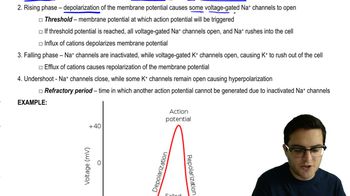The RNA polymerase enzyme binds to ________, initiating transcription.
a. Amino acids
b. tRNA
c. The promoter sequence
d. The ribosome
 Verified step by step guidance
Verified step by step guidance Verified video answer for a similar problem:
Verified video answer for a similar problem:



 4:16m
4:16mMaster 1) Initiation of Transcription with a bite sized video explanation from Jason
Start learning